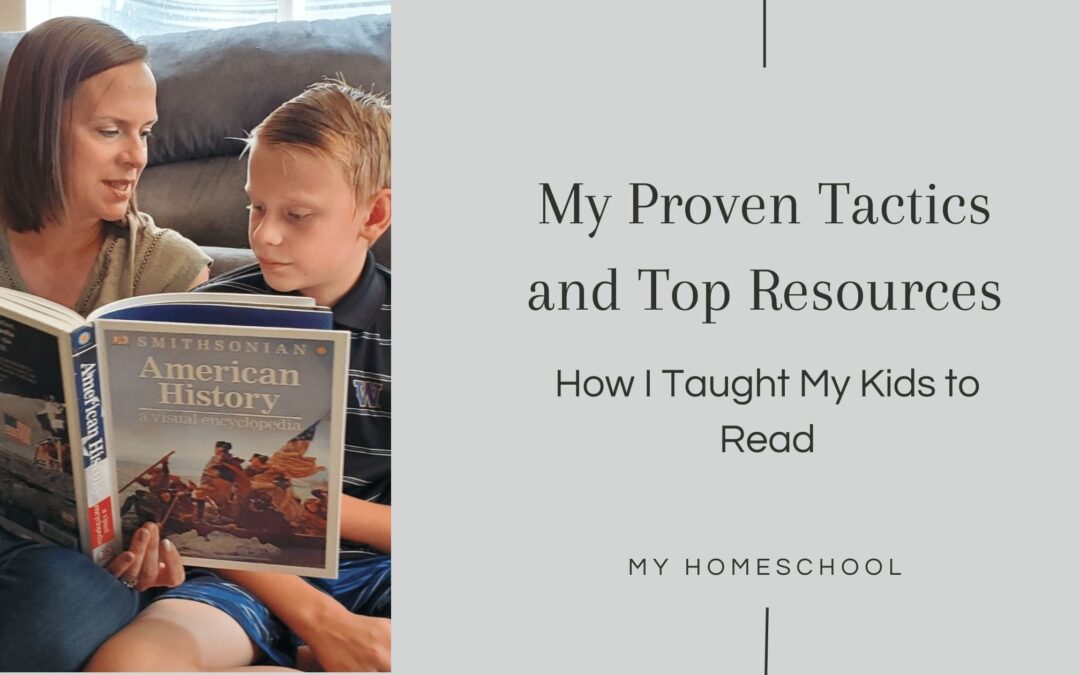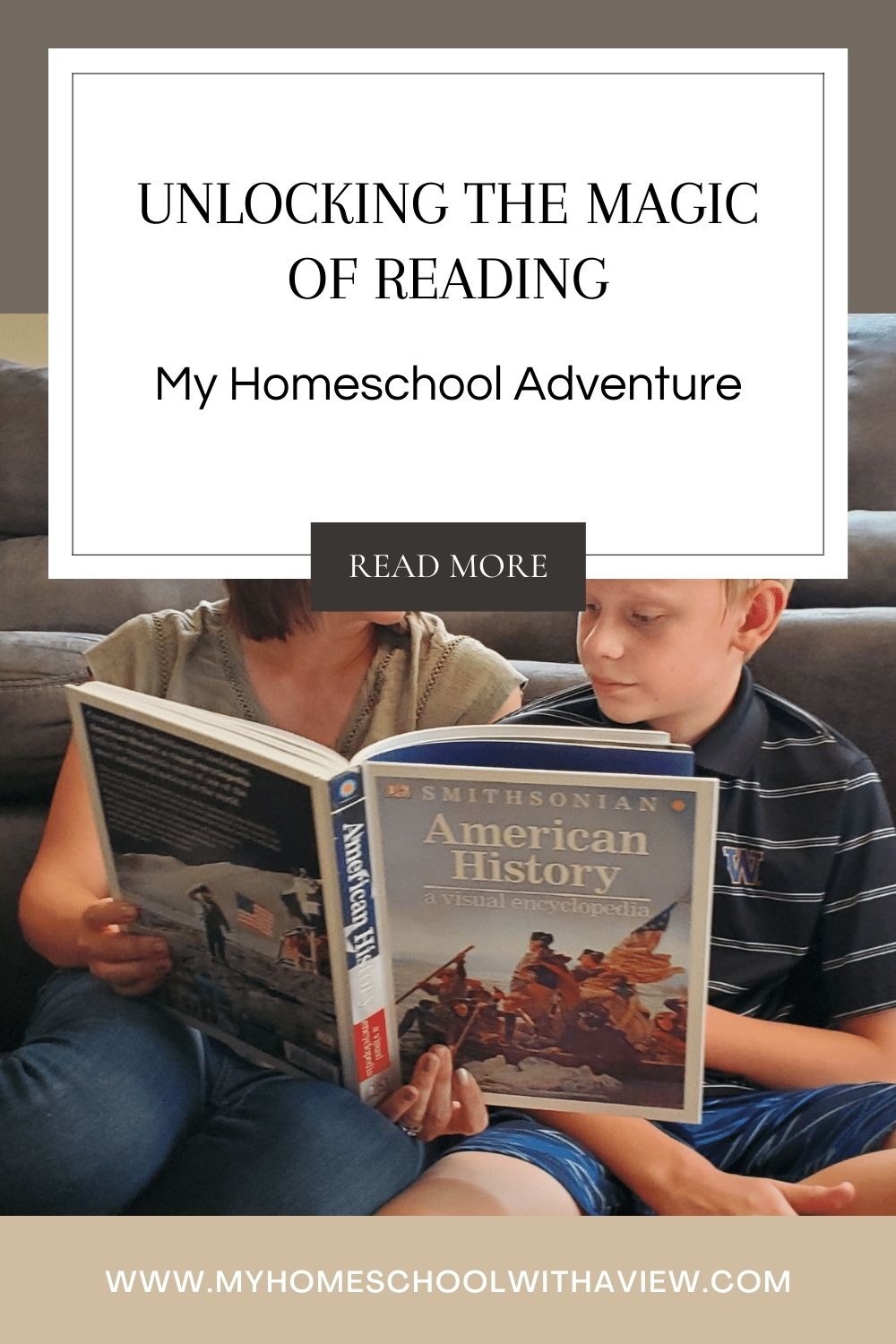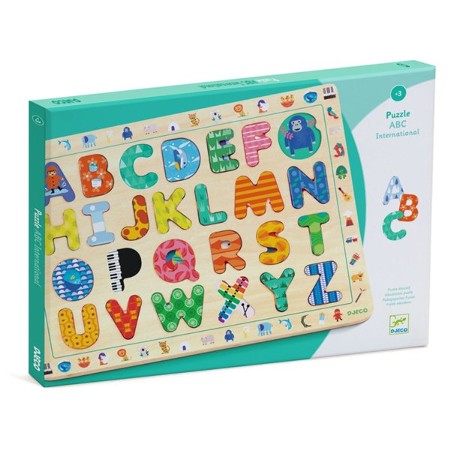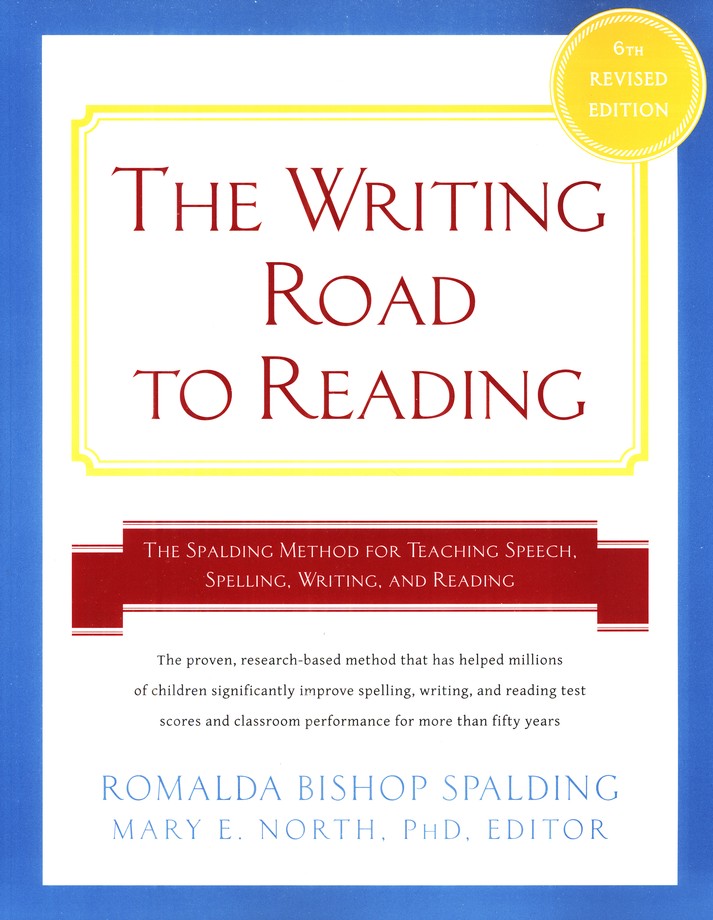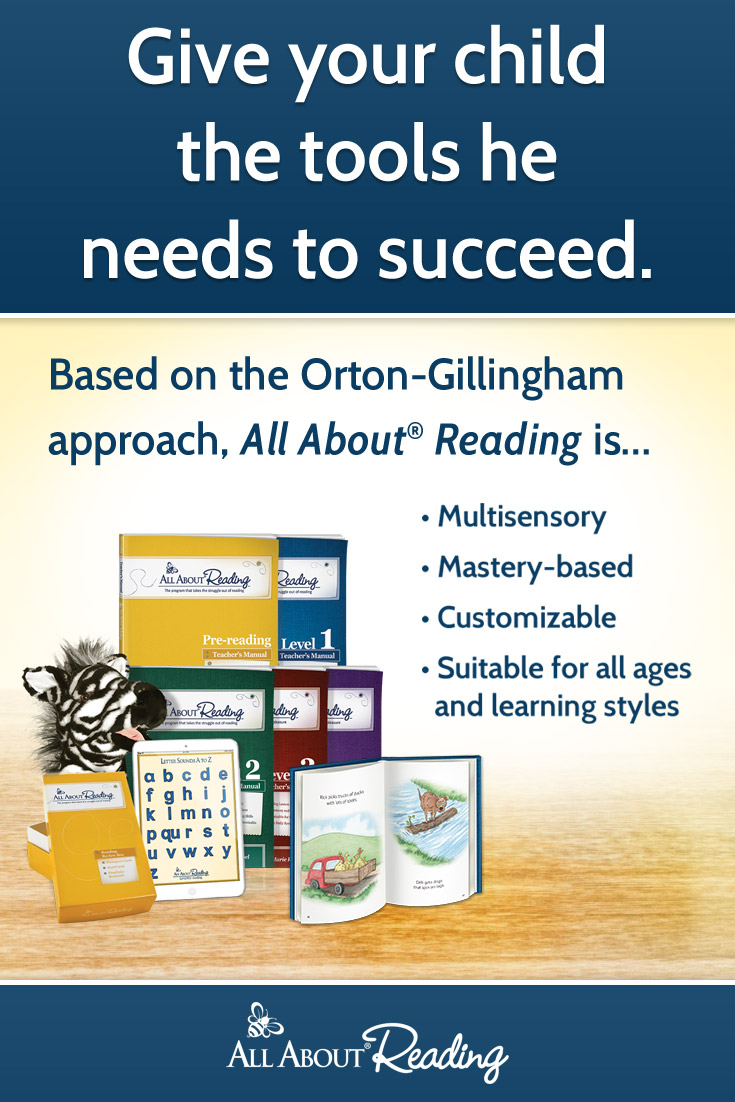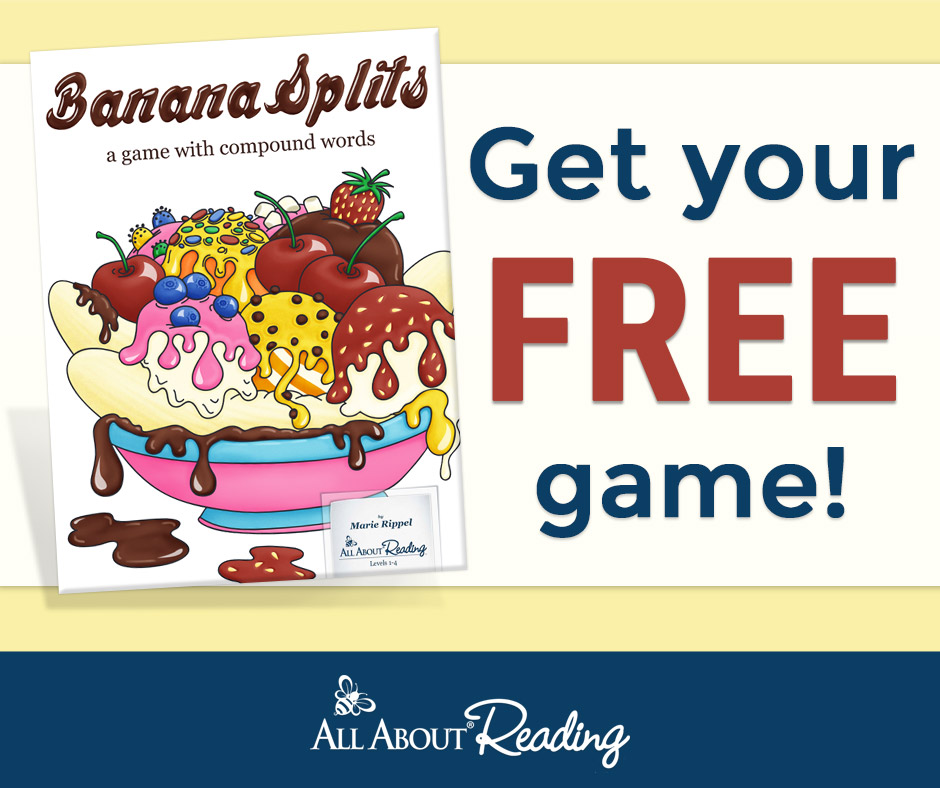Teaching kids to read seems to be the one part of the homeschool adventure that intimidates us the most. We treat it as if their whole education is riding on this skill. And it kind of is.
Here at My Homeschool with a View, we are not about fear. We are about courageous homeschooling and I am here to use my experience to empower you to be a courageous homeschooler too.
With that being said, here is my story of how I taught my kids to read and exactly what I used to accomplish this seemingly monumental task.
This post contains affiliate links and My Homeschool with a View, LLC participates in the Amazon Associates program. If you make a qulaifying purchase through our links, we earn a commission at no additional cost to you . Thank you for supporting this site! You can read my affiliate and advertising disclosure here.
Reading Aloud and Alphabet Puzzles
I am of the opinion that learning to read begins with enjoying books. I began reading to my kids as infants, and this made them eager to learn to read independently.
We also used alphabet puzzles and I would sit on the floor with my kids and say the names of the letters and their sounds as we played. The result was both of them knowing all of the letter sounds by age three.
This wasn’t a goal of mine or something I pushed on them. I am actually not a huge fan of early academics, but it doesn’t mean that I don’t encourage early learning. And looking back, this was extremely effective in laying the foundation for them to learn to read.
The Writing Road to Reading
My oldest began kindergarten in a classical charter school. The school used The Writing Road to Reading, commonly known as The Spalding Method.
While we love and support good teachers (and have teachers in our family), my son’s kindergarten teacher was not one of them. She was terrible, and only taught kindergarten so she could work part-time. Teaching didn’t seem like her thing, and I can’t say she was really teaching The Spalding Method. But she introduced me to the method.
I was sending my son to school every day, then teaching him at home. Which is actually a major reason I ended up homeschooling. But back to The Spalding Method.
Spalding is an Orton-Gillingham approach that is often used with dyslexic learners, but can be an effective approach for all learners. While I like this approach, The Writing Road to Reading has kids learn to read and spell simultaneously, and I think it’s a seriously flawed approach.
Kids are often ready to read before writing, and I found that combining the two skills meant that my son couldn’t take off with reading like he was ready to. His spelling held back the reading.
Reading Lessons Through Literature
Our first year homeschooling, I began using Reading Lessons Through Literature. While it is a good reading program, it didn’t give me enough instruction as a new homeschooler. It was difficult for me to wrap my head around how to use it.
Christian Light Language Arts
A few months into that first homeschool year, I ended up using Christian Light Language Arts because it focused on traditional phonics instruction. I paired that with early reading books and it was great to get him to take off with reading.
All About Reading
The following year my youngest son was added to My Homeschool with a View for Kindergarten. My oldest began All About Reading Level Three, and my youngest started level one.
All About Reading was perfect for my oldest. I feel like levels three and four take students from learning to read to advanced readers. My oldest thrives with a mastery approach to learning, so he thrived with All About Reading.
Christian Light Reading
On the other hand, All About Reading moved too slowly for my youngest. He is the typical younger brother with FOMO, and he wanted to read. Mastering one step at a time was not for him.
Since he was already doing Christian Light’s Kindergarten LightUnits, I switched him to Christian Light Reading. This was a perfect approach for him as it uses tools like pictures and sight words to get them reading right away.
I like the traditional phonics approach of Christian Light. My youngest liked that he could pick out early reading books at the library and actually read them. This curriculum worked very well for him.
Buddy Reading
Buddy reading is one of the best strategies I can recommend to transition to independent reading. With both of my kids, we would take turns reading a page at a time. This gave them breaks and they still followed along with their eyes, so it provided an auditory stimulus while they read.
Let’s be honest. Listening to an emerging reader can feel torturous. Like, make those guys down in Guantanamo listen to a kindergartener try to read Biscuit in the Garden for the tenth time and they will confess to everything to make it stop. But that might violate the Geneva convention.
Yes, I am getting back to buddy reading.
Buddy reading helps mom refocus and regain patience. It makes the reading session just a little bit shorter by carrying some of the load for our littles. You can start by alternating paragraphs and move to whole pages. This helps build endurance for your precious little reader, and your patience.
Reading Across All Subjects
Once my boys could read, we moved into reading real books and narration. Since I don’t really like to do a lot of planning, we used sonlight readers up until 5th grade. I would have stayed with this method, but Sonlight only has independent readers until 5th grade level, then they are integrated with history.
My philosophy is that once they can read, most of their learning for content subjects should be reading. At least until high school.
Literature Based Curriculum
As I mentioned earlier, I don’t like to plan so I have utilized a lot of literature based curriculum to make reading accessible across all subject areas. Beautiful Feet is my all time favorite publisher of literature based curriculum. But Sonlight and BookShark deserve a strong mention here as well.
My View of How to Teach Kids to Read
Here are a few takeaways and advice I would give based on my experience.
- Read aloud early and often
- Develop pre-reading skills through play not pressure
- Use a strong learn to read curriculum to build a foundation
- Choose curriculum based on your child’s needs and wants
- Get kids reading real books as soon as they can to hold interest
- Make buddy reading time warm and fuzzy
- Read across all content subject areas
This post is all about teaching kids to read.
Other posts you may like:
Reading with Expression: Five Teaching Tips and Free Printable – All About Reading
My Tale of Homeschool Styles: From Classical to Now – My Homeschool with a View
5 Practical Ideas to Thrive as a Homeschool Mom and Beyond – My Homeschool with a View

